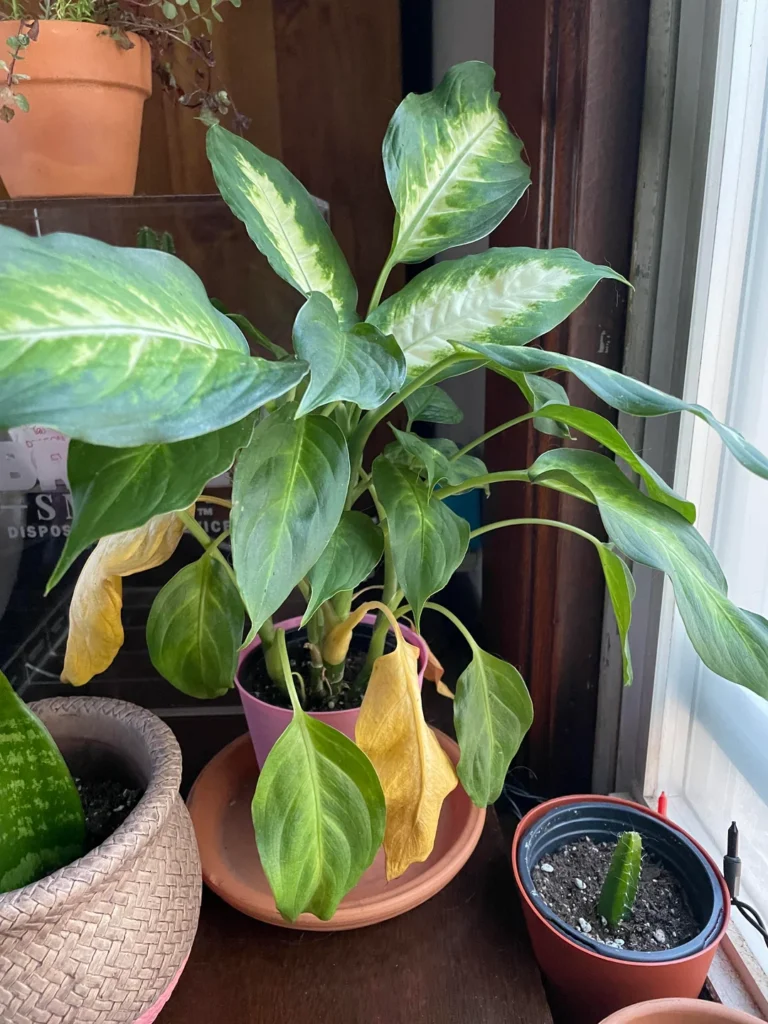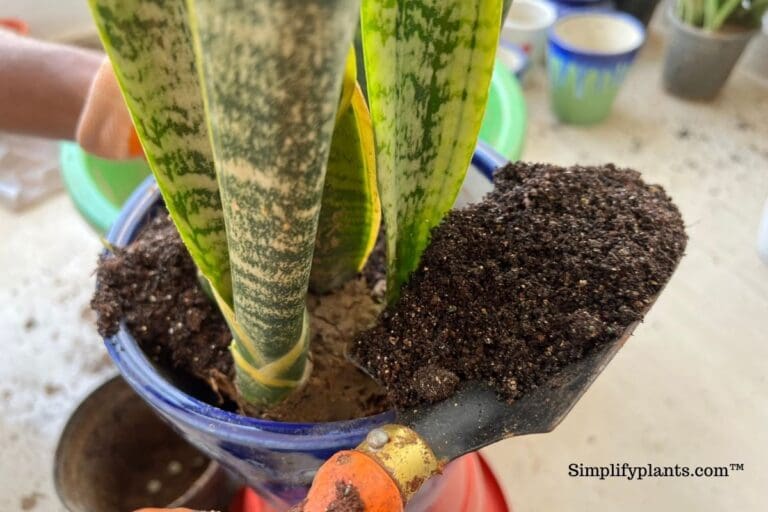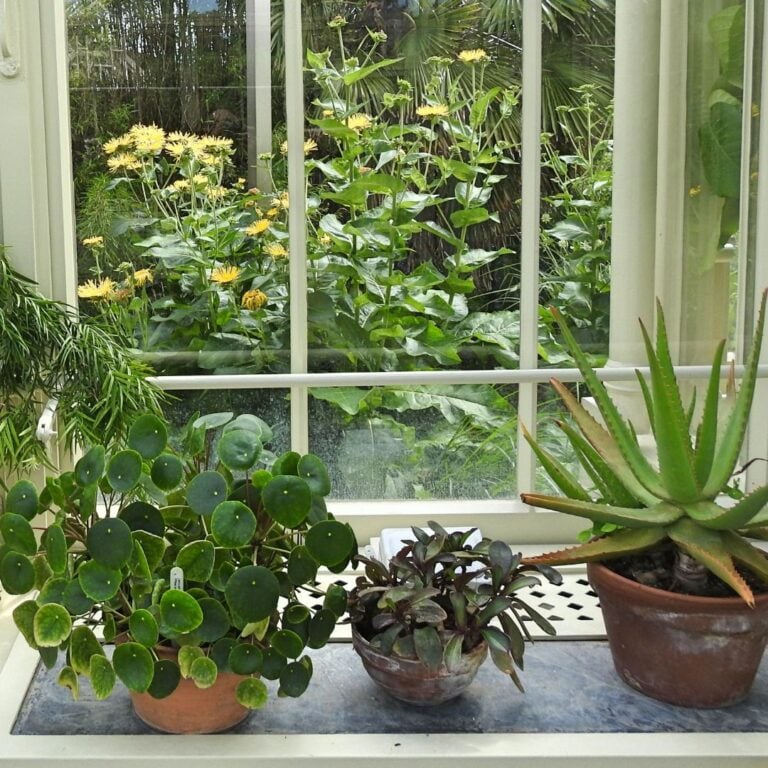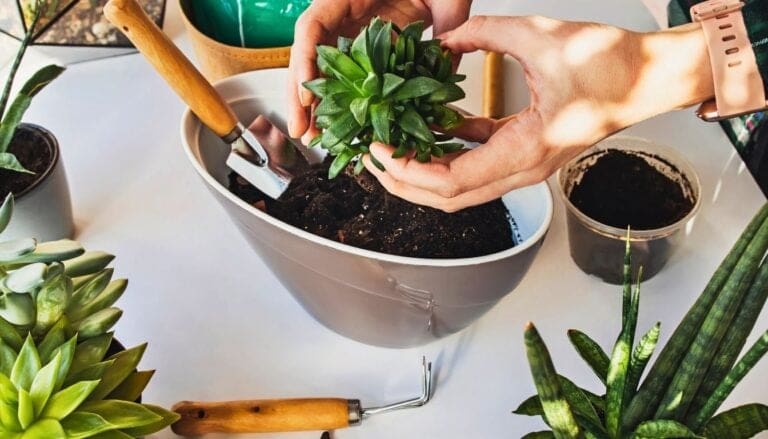6 Mistakes New Plant Owners Make in Fall and How to Avoid Them
I really enjoy taking care of my plants, but I’ll admit—fall can be a weird time for new plant owners like me.
The seasons shift, and suddenly it’s easy to make little mistakes without even realizing it.
If you know what to look out for, your plants will have a much better shot at staying healthy and happy.
Honestly, just knowing a few tips makes fall way less stressful for me and my plants.
Please note: Simplify Plants is reader-supported. As an Amazon Associate, I earn from qualifying purchases made by our readers with no extra cost added to you all! Some links in the post are affiliate links and I get a commission from purchases made through links in the post.
1) Overwatering After Shorter Days

Once fall hits, the days get shorter, and plants just don’t need as much water.
I used to stick to my summer watering schedule, but, yeah, that didn’t work out so well. Plants slow down in the fall and winter, so their soil stays wet a lot longer.
If I keep pouring on water like it’s July, it just piles up in the pot.
That’s a recipe for root rot, which is honestly one of the worst things that can happen to a plant. Now I always check the soil before watering, instead of mindlessly following my old routine.
I’ve gotten into the habit of poking my finger into the top inch of soil. If it’s still damp,
I just leave it alone. My plants seem happier when I actually listen to what they need, not what I think they need.
I keep an eye out for yellow leaves or wilting, too. Funny enough, those can mean too much water, not too little.
Honestly, it’s safer to let them get a bit dry than to drown them in fall.
Just tweaking my watering habits has made my plants way healthier during the cooler months. It’s wild how much difference a small change can make.
2) Ignoring Indoor Humidity Needs

When fall rolls around, the air inside gets noticeably drier.
I used to forget my plants actually need more humidity now, not less. A lot of houseplants are from the tropics and, well, dry air just doesn’t cut it.
Dry air can mean brown leaf tips or wilting. If I spot crispy leaves or curling edges, I know they’re begging for more moisture.
With the heater on, the humidity drops even more. It dries out my skin, and it’s rough on my plants too. That’s when I start thinking about humidifiers.
Grouping my plants together helps a little. Sometimes I put a tray of water nearby, which is super easy.
I tried misting the leaves, but honestly, it didn’t do much. Long-term fixes work better. And I always keep my plants away from heating vents—those things are brutal.
When the air feels dry, I check with a simple humidity gauge. Most houseplants like it above 40%. If it dips below that, I bump up the moisture any way I can.
If I ignore humidity, my plants just don’t thrive. A few small changes and they look so much greener and happier.
3) Not Adjusting Fertilizer Schedule

I used to think plants needed the same amount of fertilizer all year. Turns out, that’s a classic rookie mistake. In fall, plants slow down and just don’t need as much food.
If I keep feeding them like it’s spring, I risk burning their roots or leaves.
Too much fertilizer when they’re barely growing is just asking for trouble. Cutting back lets them rest and gear up for winter.
When I notice my plants aren’t growing much, I know it’s time to ease up on the fertilizer. Sometimes I stop altogether for a month or two.
I always read the label on my fertilizer. Some are okay for year-round use, but most should be used sparingly in the cold months.
So for me, fall means less fertilizer and more chill time for my plants. It’s a simple change, but wow, it helps.
4) Forgetting to Clean Fallen Leaves

I’ll admit, it’s tempting to ignore fallen leaves as they pile up. But leaving them can cause all sorts of problems, indoors and out.
When leaves sit on the soil, they trap moisture. That can lead to mold, rot, and just soggy roots. Plants don’t love that.
Fallen leaves also hide pests. Bugs and slugs love damp, hidden spots, and I really don’t want them making a home in my pots.
Cleaning up leaves keeps everything healthier. I check around my pots and sweep up any strays.
If I have a compost bin, those leaves go straight in. It’s a nice way to recycle them for the garden.
Sometimes I just use my hands or a little broom to gather them up. After a rain, I’m extra careful not to leave wet leaves sitting around.
It only takes a minute, but it makes a huge difference for my plants—and honestly, a tidy space just feels better.
5) Neglecting Plant Placement from Window Light

I always forget how much sunlight changes in fall. My windows just don’t get the same light as in summer, and my plants definitely notice.
If I leave them in their old spots, some just don’t get enough. The sun’s angle shifts, days are shorter, and some rooms get almost no direct light by late fall.
I try to keep an eye on how much light each plant is getting. Sometimes that means I have to move pots closer to the window. If I don’t, leaves get dull or start dropping.
Oh, and cleaning the windows actually helps a lot. Even a thin layer of dust can block more light than I realized. A quick wipe makes a big difference.
South or west-facing windows are my go-to for the brightest light this time of year. Shade-loving plants are fine in corners, but most of my collection wants the sunniest spot I can give.
If I see plants stretching or leaning, that’s their way of asking for more light. I try to spin my pots every week or so to keep them growing straight.
Moving plants around might sound basic, but it’s something I have to remind myself to do every fall. It really helps keep them healthy and looking good.
6) Failing to Prune Dead or Yellow Leaves

I used to think any leaf was fine as long as it was attached. But, nope—dead or yellow leaves just drag the plant down. Leaving them can actually cause problems.
When I spot yellow or crispy leaves, I snip them off. That way, my plant can focus on fresh, healthy growth. Plus, it just looks nicer.
If I leave those leaves, they attract pests and sometimes mold. Getting rid of them keeps my plant healthier and prevents bigger issues.
Pruning is easy. I use clean scissors or just pinch them off with my fingers. Every week or two, I do a quick check for leaves that need to go.
Watching the leaves helps me spot other problems early, like bugs or dry soil. If I see a bunch of yellow leaves, I know something’s off and check the basics.
Honestly, nothing beats how tidy and happy my plants look after a quick trim. A little pruning goes a long way, especially in fall.
Understanding Seasonal Changes
When fall shows up, both temperature and sunlight start shifting. My plants pick up on these changes fast.
How Plants Respond to Cooler Temperatures
Cooler nights and chilly mornings tell my plants it’s a new season. Most houseplants slow down their growth in fall. I see them use less water and nutrients, so if I keep up summer habits, I’m just asking for root rot.
I always check the soil before watering. If it’s still damp, I wait. My tropical plants, like pothos and philodendrons, get yellow leaves if they’re too cold, so I keep them away from drafty windows.
Here’s a quick cheat sheet for plant temperatures:
| Plant Type | Preferred Min Temperature |
|---|---|
| Tropical | 60°F (16°C) |
| Succulents | 50°F (10°C) |
| Ferns | 55°F (13°C) |
Knowing these numbers helps me protect my plants from cold air and keep them happy.
Light Shifts and Their Effect on Indoor Plants
As the days get shorter, my home gets a lot darker. Plants need enough light to stay strong, but the sun just doesn’t last as long in fall.
I move my plants closer to bright windows, but not right up against cold glass. South or east-facing windows get the most sun. If I see pale leaves or leggy stems, that’s my cue they need more light.
Sometimes I’ll use a small grow light for a few hours at night. Here’s what I do to help my plants get enough light:
- Move them to the brightest spots I can find
- Wipe dust off leaves so they can soak up more sun
- Plug in a simple LED grow light if it’s super gloomy
Just keeping up with these light changes keeps my plants looking good through the season.
Setting Up a Plant Care Routine for Fall
Once fall hits, I have to adjust my routine. The days are shorter, temps are all over the place, and my plants need a bit of extra attention.
Adjusting Watering Schedules
In fall, plants slow way down thanks to less sunlight. I always poke the soil before watering. If it feels damp, I wait it out. Overwatering in cool weather is a fast track to root rot.
My indoor plants definitely drink less now. I cut back and let the soil guide me. Most houseplants are fine with water every 10-14 days during fall. Succulents? Even less.
My go-to tips:
- Check soil moisture with my finger
- Use pots with drainage holes
- Never let plants sit in water
These little habits keep my plants a lot healthier as the weather cools down.
Choosing the Right Fertilizer for Fall
In fall, I usually switch to a fertilizer with less nitrogen. Too much nitrogen just leads to floppy, leggy growth—definitely not what you want before winter rolls in.
I go for a balanced or low-nitrogen fertilizer. Fertilizing in fall? It’s lighter for sure.
I’ll feed my plants maybe once or twice during the season, and honestly, some—like succulents and cacti—don’t need any food at all right now.
Fertilizer Table for Fall:
| Plant Type | Best Fertilizer | Frequency |
|---|---|---|
| Foliage Plants | Balanced (10-10-10) | Monthly |
| Succulents | None | Skip |
| Flowering Plants | Low-nitrogen | Every 4-6 weeks |
Frequently Asked Questions
I’ve definitely made my fair share of mistakes in fall—watering too much, forgetting about shorter days, all that. With a little practice, though, my plant care routine has gotten a lot smoother.
What are the common watering errors for indoor plants during autumn?
Watering too often is a classic mistake, especially when it gets cooler and days are short. Most plants just don’t need as much water in the fall since they’re not growing as fast.
I try to check the top inch of soil before watering. If it’s still damp, I just wait a bit longer.
How do I choose the right pot size for my new plants in the fall season?
I used to think bigger pots were better, but nope—if the pot is too big, all that extra soil can hold too much moisture and cause root rot.
Now I pick a pot just a little bigger than the plant’s root ball. Good drainage is really key, too.
I always look for pots with drainage holes so roots don’t end up sitting in water.
Can you tell me which fertilization mistakes to avoid with fall plant care?
I try not to feed my plants on their usual schedule in fall. Most of them need way less, or even no fertilizer, since growth really slows down.
Too much fertilizer can actually damage roots and make plants weak. I usually wait until I spot new growth in spring before ramping things up again.
What’s the best way to adjust plant lighting as the days get shorter in fall?
My plants definitely need more light as fall days get shorter. I’ll move them closer to windows or use a little grow light if they start looking stretched out.
Cleaning the windows and trimming any big leaves helps them soak up all the light they can get.
Do I need to change my plant care routine with the cooler temperatures of fall?
For sure—cooler air means I water less and watch out for cold drafts near windows.
I also try to keep an eye on humidity indoors. Sometimes, a small humidifier is a lifesaver for plants when the air gets too dry.
What are some signs that I’m over-caring for my plants in the autumn months?
Yellowing leaves, soggy soil, or mold on the surface—these are usually my first clues that I might be overdoing it.
Honestly, plants just want to chill out in the fall. They really don’t need much from me.
I try to avoid fussing with pruning or re-potting. Extra feeding? I skip that too.
Less is usually more during autumn, even if it feels a bit counterintuitive.
Recommended Garden Supplies
| Product Image | Our Recommended Gardening Supplies | Check Offers! |
|---|---|---|
Top Top
Top
Top
Top
Top
Top
Top
Top | rePotme Houseplant and Tropical Classic Potting Soil Mix | Check Offer On Amazon |
 Top
Top
Top
Top
Top
Top
Top
Top | Espoma Organic Indoor Plant Food | Check Offer On Amazon |
 Top
Top
Top
Top
Top
Top
Top
Top | GooingTop LED Grow Light 6000K Full Spectrum Clip Plant Growing Lamp | Check Offer On Amazon |
 Top
Top
Top
Top
Top
Top
Top
Top | Soil Moisture Meter | Check Offer On Amazon |
 Top
Top
Top
Top
Top
Top
Top
Top | Govee Hygrometer Thermometer, Bluetooth Enabled! | Check Offer On Amazon |
 Top
Top | LEVOIT Humidifiers for Large Room(Best For Plants) | Check Offer On Amazon |
 Top
Top
Top
Top
Top
Top
Top
Top | Upgraded DIY Automatic Drip Irrigation Kit, 15 Potted Houseplants Support | Check Offer On Amazon |
 Top
Top
Top
Top
Top
Top
Top
Top | Stainless Steel Heavy Duty Gardening Tool Set | Check Offer On Amazon |
 Top
Top
Top
Top
Top
Top
Top
Top | Bonide Insecticidal Soap | Check Offer On Amazon |
 Top
Top
Top
Top
Top
Top
Top
Top | Bonide 32 oz Spray Neem Oil for Organic Gardening | Check Offer On Amazon |
 Top
Top
Top
Top
Top
Top
Top
Top | Garden Safe Fungicide | Check Offer On Amazon |






